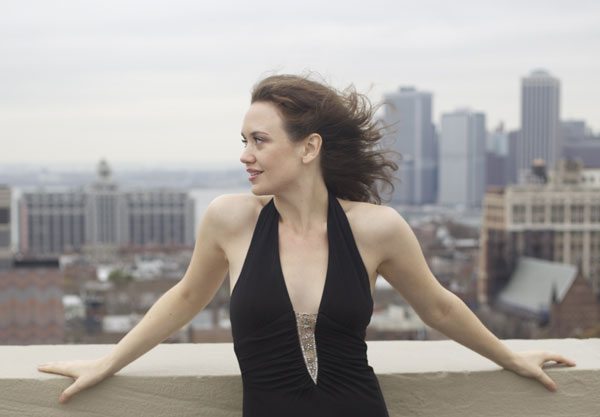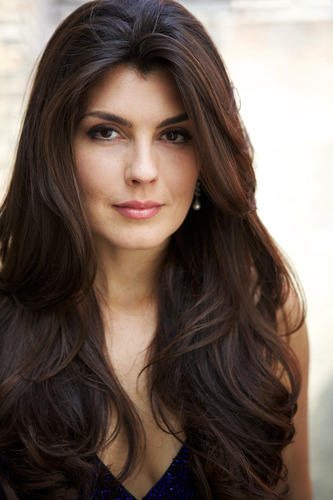Unless you’ve never turned on a radio, stepped foot in an elevator, or walked into a business establishment, it’s almost impossible to have not heard at least one rendition of “The Girl from Ipanema”. Written in 1962 by Brazilian singer-songwriter/composer Antonio Carlos Jobim, the ubiquitous song has been recorded over 240 times by various artists and is one of the most recorded songs in history.
In 1967, Frank Sinatra teamed with Jobim to record one of the most legendary bossa nova albums of all time, aptly titled Francis Albert Sinatra & Antônio Carlos Jobim. It was Grammy nominated for album of the year and Sinatra himself considered it among his favorite albums.
On Friday June 10th at the Sheen Center For Art and Culture (18 Bleecker Street), the award winning Brazilian-Cuban opera singer Angelica de la Riva and celebrated Broadway and jazz artist Hilary Gardner will pay tribute to this classic record in an evening of song entitled, 2:The Art of the Duo-Sinatra-Jobim Sessions. They will be joined by a quintet of New York’s finest musicians.

In a recent phone conversation, Manhattan Digest spoke with de la Riva and Gardner to talk about the upcoming concert and the lasting endurance of these titular artists.
MD: How did this project transpire?
ADLR: This project is one that I have wanted to do for so many years. Both Sinatra and Jobim were a huge inspiration for me growing up. Hilary and I went to college together and this concert was born from a mutual admiration for this music. I knew that Hilary would be the perfect person. She has a beautiful career as a jazz singer and I am more into the operatic and classical world. We said, “Let’s do this!”
MD: Are you using the original Claus Ogerman arrangements?
HG: No. They were arranged for a string orchestra, but the amazing thing is that these songs hang together so well, whether they are played by a solo performer, small groups, or a full orchestra. They are just perfect little stories that were meant to be sung
MD: Will your interpretations maintain the feel and integrity of the originals or will you put a new spin on them?
ADLR: We will absolutely maintain the integrity. Even though we are performing with a quintet, we are keeping the color of the musical roots the same as we possibly can.
MD: Angelica, aside from some of your musical theater roles (A Little Night Music and Beauty and the Beast), have you delved into the American standards/pop realm before? Is this a new performance territory for you?
ADLR: This is what I always listened to with friends and colleagues, but this will be the first time performing them on stage. It will be very different from everything that I do with classical music
MD: Sure. You can definitely swing a lot more with this style of music!
MD: Hilary, your voice has been compared to Doris Day and Peggy Lee. Were they your major influences?
HG: Not Doris Day so much. I came to know Lee’s music later. In terms of early influences, I credit Ella Fitzgerald, Carmen McRae, Patsy Cline, and Judy Garland. As I got older, I developed a strong affinity for Lee-not just musically, but in the way she conceptualized albums and the way she approached the material. I’m a huge, huge fan.

MD: Angelica, who were your influences?
ADLR: I listened to a lot of Brazilian popular music, but I really loved the beautiful velvety sound of a well-known singer named Maysa Matarazzo.
MD: Angelica, I also understand you are a rowing champion and may be vying for a space in the Olympics in Rio? What is the current status on that?
ADLR: Yes. I was on the Brazilian national team before I moved to New York. 2 years ago, I was back in Brazil and the coach had urged me to come back to the team. I did the first trials and I did alright, but didn’t secure a spot for the Olympics because they changed the rules. The number was decreased from 3 spots to 1 spot. But, it was a fantastic experience.
MD: Well, on the positive side, I’m sure you are the best singer of anyone who’s on the rowing team! Besides, Sinatra was often noted for his breath control. I’m sure that has come in quite handy for both opera and bossa nova.
ADLR: (Laughs) I learned so much about my voice doing it. The level of discipline was at a whole new level because I had to balance rowing training with my concert schedule.

MD: Hilary, you’ve already had experience singing Sinatra’s music in Broadway’s Come Fly Away. What is it specifically about the collaboration of Jobim and Sinatra that remains so relevant to you and to the music world today?
HG: There is a history of real simpatico between American jazz musicians and bossa nova. Before Sinatra and Jobim teamed up, there were wonderful recordings of Stan Getz, Charlie Byrd, and Joao and Astrud Gilberto. A lot of that has to do with the fact that Brazilian music and American jazz music have to do with time and rhythm. If you listen to Joao Gilberto for instance, his sense of where the beat was and his phrasing was astonishing. It sounded as though he was just speaking to you, but the groove was so deep. And nobody swung harder or had a better sense of timing than Frank Sinatra. He was the perfect singer to bridge those gaps. They are beautiful songs with beautiful stories that allowed the lushness of his instrument to shine through. It was just a magical collaboration.

MD: Will you be singing these songs solo or as duets?
ADLR: Both actually. And we’ll also be singing in Portuguese and English. Hilary has a perfect accent when she sings in Portuguese and I’m very excited every time I hear it. It’s so wonderful to have such a wonderful singer singing my language.
MD: Well, we are so looking forward to seeing the concert this Friday. Thanks for chatting. Rest up, take care of your voices, and have a great show!
2: The Art of the Duo with Angelica de la Riva and Hilary Gardner will be performed this Friday, June 10th at 8PM The Sheen Center (18 Bleecker Street, New York, NY). For tickets visit: http://sheencenter.org/shows/sinatra-jobim-sessions-featuring-angelica-de-la-riva-hilary-gardner/
